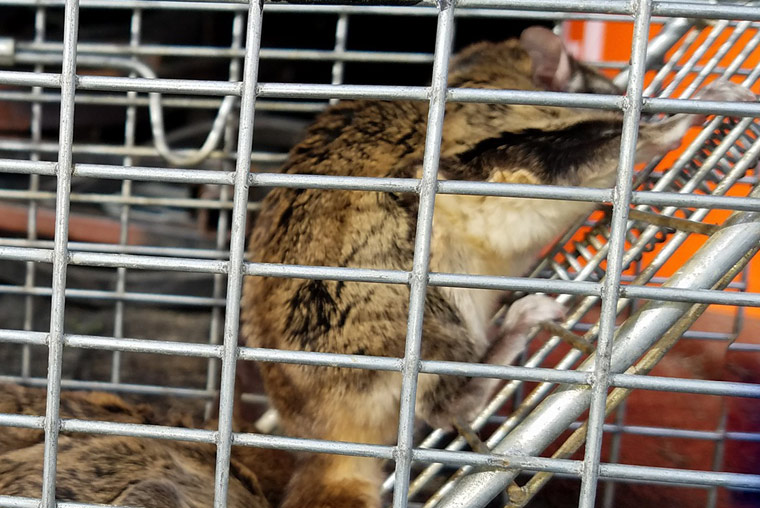- info@wildlife-removal.com
Call us for help in your town
Wildlife Removal Education
Can You Use Repellent to Remove Flying Squirrels from the Attic?
Need flying squirrel removal in your hometown? We service over 500 USA locations! Click here to hire us in your town and check prices - updated for year 2020.
Repellents used for flying squirrels include moth balls, ammonia soaked rags, homemade mixtures of cayenne pepper and castor oil, ultrasonic devices that send off high frequency sounds, radios, light machines that come on when sensors are triggered, and even flooding using hosepipes and sprinkler systems. It would seem that more and more so-called squirrel repellents are being added to the list all the time, and there's a good reason for that …

They just don't work. If they did, everyone would be sprinkling the stuff around their homes and no one would have a nuisance animal problem. Let us tell you something, that’s very much NOT the case. There are more and more nuisance wildlife calls now than there ever was, and that’s because these creatures have no choice but to get closer to us. They are running out of natural, wild habitats. We’re taking them all away.
Out of all of those repellents, there are actually a couple that might have some effect, but you can’t rely on them alone. Repellents are not enough to solve any kind of wildlife problem, and they don’t make the problem go away at all. Many repellents do not work. Moth balls have never been shown to work against any wild critter, although they have been proven to be incredibly dangerous, and actually very toxic too.
If you wouldn’t want your cat or dog to eat anything that you’re putting down for the flying squirrel, don’t put it down. Even if your domesticated pet doesn't get to the poisonous or toxic material, secondary poisoning can still occur, usually when a poisoned animal is ingested by another animal.
You really should reconsider your choice to use toxic and dangerous compounds and chemicals, especially in the great outdoors. We don't advise that you use them in your home either, so using them at all is just not wise. These compounds can easily contaminate areas of soil. If you have plants growing, they will likely die. They will suffer a little, at least. If you have fruits, vegetables, or other plants that you plan on eating someday, you will no longer be able to eat them. The roots will have soaked up some of those moth ball toxic compounds and made them potentially rather dangerous.
Toxic compounds from in ammonia and moth balls can also saturate and contaminate water sources, and even the smallest amount could require some pretty hefty work and expense to put right.
Making noise and incorporating lights can help. Flying squirrels are generally nocturnal creatures, but it is not unusual to see them throughout the day. They are quite timid animals, and would much rather shy away from humans and other predators, so making a bit of noise and adding some light can work for a while. If the flying squirrels are already in your attic, however, it could just encourage them to look for somewhere deeper and darker to hide. This makes your job much more difficult when trying to get rid of them.
There are quite a few so-called flying squirrel repellents, but you will usually find that most of them are a waste of your energy and cash. Plus, when you stop using the repellents, you’ll have nothing to keep these critters at bay. They’ll just come right back.
Go back to the Flying Squirrel Removal page, or learn tips to do it yourself with my How to Get Rid of Flying Squirrels guide.


















